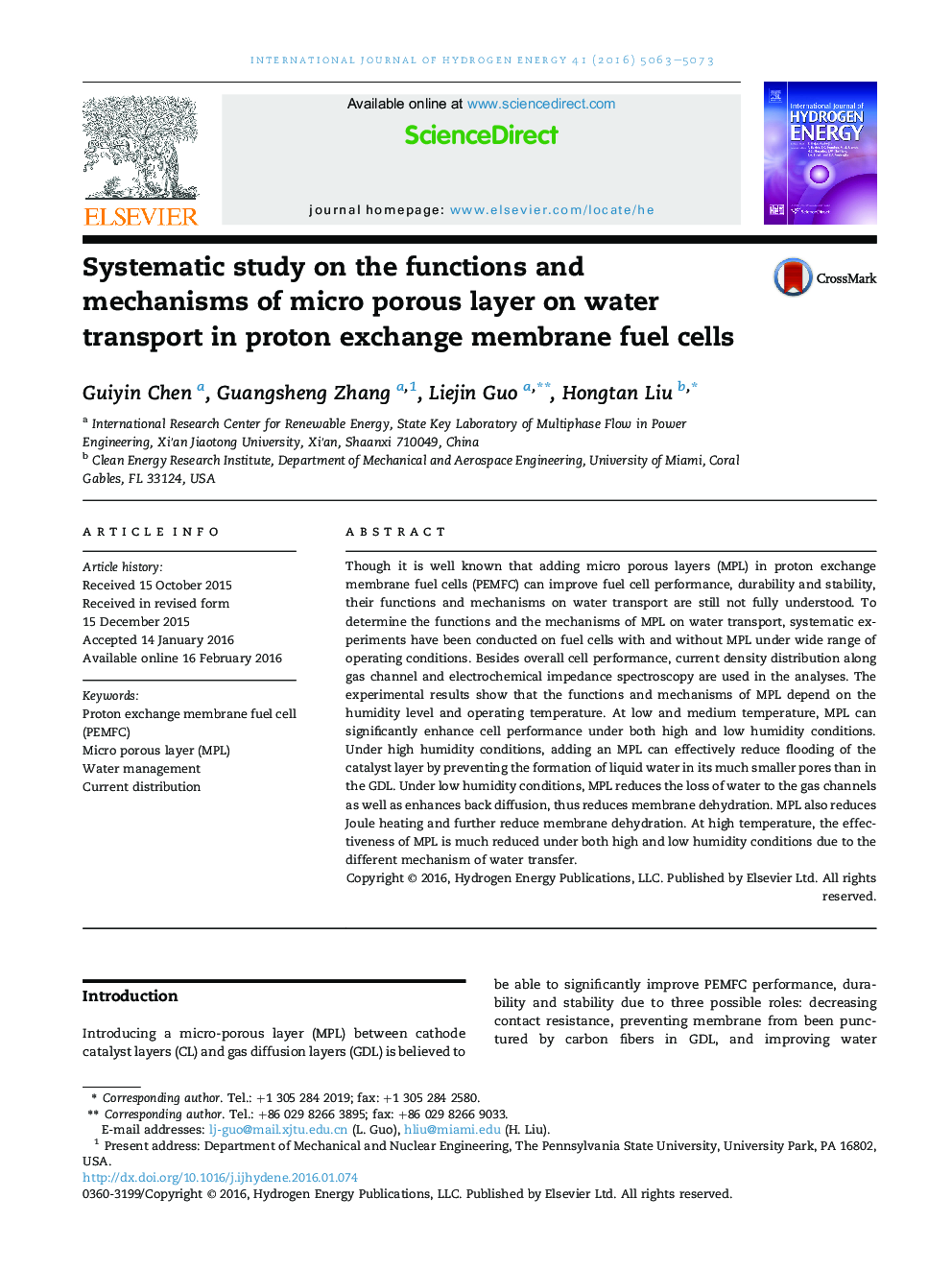| Article ID | Journal | Published Year | Pages | File Type |
|---|---|---|---|---|
| 1268870 | International Journal of Hydrogen Energy | 2016 | 11 Pages |
•MPL has distinct functions under different local water conditions.•MPL can prevent flooding under high humidification and low temperature.•MPL can also enhance membrane hydration under dry condition.•Under high temperature, effect of MPL is not significant.
Though it is well known that adding micro porous layers (MPL) in proton exchange membrane fuel cells (PEMFC) can improve fuel cell performance, durability and stability, their functions and mechanisms on water transport are still not fully understood. To determine the functions and the mechanisms of MPL on water transport, systematic experiments have been conducted on fuel cells with and without MPL under wide range of operating conditions. Besides overall cell performance, current density distribution along gas channel and electrochemical impedance spectroscopy are used in the analyses. The experimental results show that the functions and mechanisms of MPL depend on the humidity level and operating temperature. At low and medium temperature, MPL can significantly enhance cell performance under both high and low humidity conditions. Under high humidity conditions, adding an MPL can effectively reduce flooding of the catalyst layer by preventing the formation of liquid water in its much smaller pores than in the GDL. Under low humidity conditions, MPL reduces the loss of water to the gas channels as well as enhances back diffusion, thus reduces membrane dehydration. MPL also reduces Joule heating and further reduce membrane dehydration. At high temperature, the effectiveness of MPL is much reduced under both high and low humidity conditions due to the different mechanism of water transfer.
